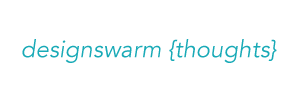I’ve been reviewing CVs for free for 6 months and supporting a variety of designers looking for work for years now. In a sector that was always (and continues to be) fragile, here’s some things to consider in a job search.
- Nobody reads, people skim. Giles taught me that in a lecture he gave my UCL students earlier this year. So focus on making your CV skimmable . And make the font bigger.
- Don’t get hung up on job titles User experience designer, interaction designer, information architect, user-centered designer could all describe the same person these days. That’s because there’s no organisation to keep anyone to a standard across sectors. So ignore the title, look at the salary and skim the job description. If 60% of it sounds like stuff you like doing, then that’s a good place to start. Otherwise, you run the risk of waiting months for the perfect job to appear. Often the perfect job is the one you create once you’re in the door and people trust you.
- Show the thing, don’t show the post-its. If I see another photo of someone standing in front of a wall of post-its in a portfolio I’m going to scream. Post-its represent a moment in time and workshop facilitation isn’t a skill specific to designers anymore. What you made, the impact you had, testimonials and a list of clients are much more powerful in a portfolio.
- Racism and ageism in hiring is real. As someone with a complicated last name and with nearly 20 years of experience, I’ve been experimenting with a few different ways to avoid discrimination in my CV in the last years. It doesn’t always work but it’s worth thinking about as 78% of the design industry is made up of white men.
- Don’t use ChatGPT to write your cover letter. Just don’t do it. If it turns out you can’t write well, people will figure that out instantly and you’ll have set yourself up for failure. Just be transparent about your level of English literacy.
- Your skills don’t matter as much as your charisma and flexibility. Design hiring is 30% skills and 70% personality so you want people to get to know you personally before you put any time into an application. You want to reach out to the hiring manager and get 10 minutes with them on the phone, ask good questions and make an impression. You want to show people you can do more. T-shaped professionals are a great asset to time poor teams. Deep specialism only works in certain circumstances, and realistically, how deep can it be? We’re not devs or engineers. We should be happy to stretch and make that an asset. ‘Yep, I can do that too’ should be deployed liberally.
Good luck out there.
